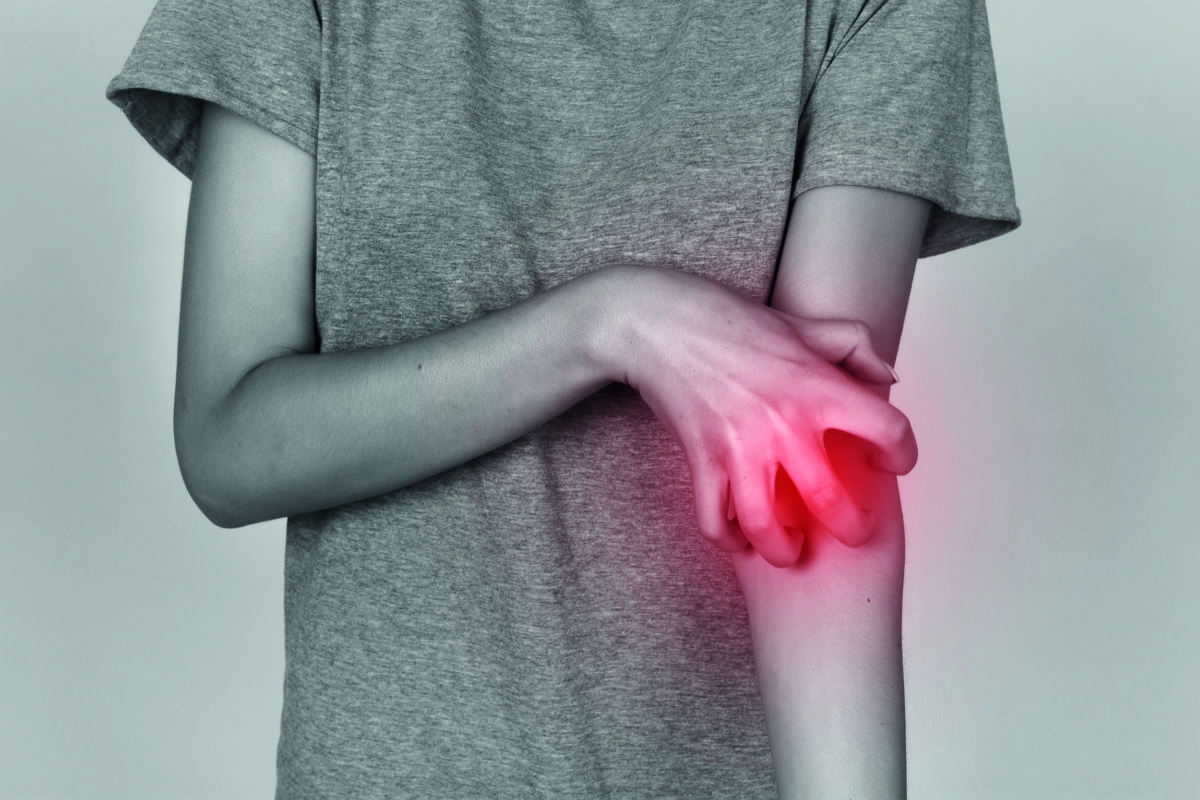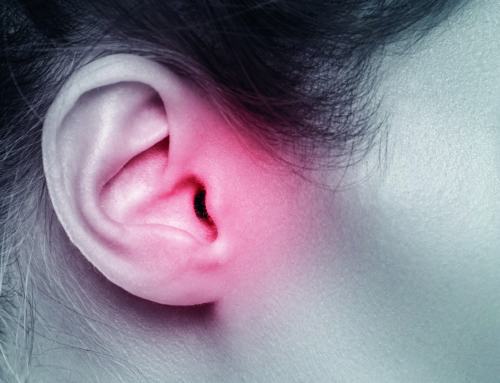Although atopic eczema (or atopic dermatitis) affects about 1.6 million adults in the UK (1), and one-in-five children, its impact is vastly underestimated by the general public. Get acquainted with the reality of the condition for sufferers and their families – and the scope of treatment, potential triggers, and summer-related tips – via Eczema Outreach Support’s expert insight.
A 2017 survey (2) of adults with eczema found 88 per cent of patients saying that the management of their disease impacts on their daily lives; 58 per cent feeling that it affects their personal relationships; 73 per cent stating that their social life is impacted; and over 70 per cent were feeling depressed as a result of the disease.
The reality for families living with moderate-to-severe eczema is often shaped by painful flares and constant itch, time-consuming treatments, sleepless nights, infections, days off school, and work for parents. It also affects confidence and may lead to social isolation. While clinicians strive to provide the right treatments for patients, the long waiting times and lack of ongoing support can have a profound impact on the patient’s health and wellbeing.
Eczema Outreach Support (EOS), a UK-wide charity, aims to fill this gap by providing free practical and emotional support to families affected by eczema; many of whom join at crisis point. The charity was set up in 2011 in Scotland by the mother of a young girl with eczema and has since been supporting over 1,300 families across the UK.
Meet Kirsty and Ruaridh – Members of EOS
‘There was a point that I never believed his eczema would get better.’
‘Nothing can prepare you for the sad and helpless way you feel when you experience your child scratching himself until he bleeds. I would find myself saying, ‘Stop scratching, please, stop scratching.’ on repeat until it made us both cry.
‘Ruaridh was around four months old when his eczema started. We were prescribed ‘light’ creams and ‘weak’ steroids while we waited the long wait to see the dermatologist.
‘A friend recommended getting in touch with EOS. The support and information was invaluable to help get us through the most difficult times. We attended an EOS event, and what an eye-opener it was.
‘Long before we were able to be seen at dermatology (who are absolutely brilliant), the team at EOS were giving us lots of practical tips and calling us to make sure that we were managing okay with the whole workload that comes with a child with eczema.
‘For Ruaridh it included stripping him down and creaming him four-to-five times a day; blasting his skin with a selection of four steroid creams on top of the base layer as required. That is, while trying to look after him as a baby, looking after his insanely jealous (but still wonderful) sister whose life had been turned upside down by the arrival of this little guy, cooking, cleaning, nursery runs, work, and generally keeping sane.
‘While all this madness was going on, EOS would call to see how we are doing. It made the eczema world feel a lot less lonely.
‘After a year of perseverance (and just pure luck, we think), Ruaridh’s skin is wonderful. He is still creamed twice a day, but this is the preventative measure we may always have to keep. Here’s to the next year and more progress, and a huge thank you to EOS – especially for the emotional support received when we most needed it.’
Magali and Gaelle’s Story – Founders of EOS
‘Breaking isolation makes a massive difference.’
‘Two months into Gaelle’s life, her skin started looking red and angry, and she was clearly very itchy. She was diagnosed with eczema. That was the start of six years of struggle.
‘One of the hardest things is to see your child suffer. You just want to take the pain away, but you can’t.
‘It never felt like the treatments actually worked as the flares kept happening, but that’s actually the nature of eczema. You do end up questioning your ability as a parent.
‘I remember taking Gaelle to parties in her princess outfits on top of full body bandages. People would ask, ‘Have you hurt yourself? What happened to you?’ We got used to educating people about eczema.
‘Over time, I realised that eczema is not taken seriously. That’s a problem. People think that ‘it’s not life-threatening like allergies or asthma’, but they don’t understand the impact.
‘When Gaelle was five, she said to me that she was the only scratchy girl in the world. That broke my heart, but to be honest I was feeling the same and wondered how we could meet families like us. There was no way to connect face-to-face that I could find. That’s when we had the idea of setting up this charity, EOS.
‘Breaking isolation makes a massive difference. You see families coming to the charity’s events; they don’t know each other but then you see them again and they’ve formed a friendship; they support each other. This alone can change your outlook on life and help the whole family when dealing with eczema.’
Over the past seven years, EOS has grown arms and legs to meet a wide range of needs and we now have a staff team dedicated to supporting and empowering our members so that they can cope better with the impact of eczema on their life.
‘With the right treatments and support, families with eczema can regain control over their life and thrive.’ – Magali Redding, CEO of EOS
About Eczema
By Professor Sara Brown, Consultant Dermatologist, Ninewells Hospital, Dundee
What is Eczema?
Eczema, also called atopic dermatitis, is an itchy inflammatory skin condition, which follows a relapsing and remitting course.
Exacerbations or ‘flare-ups’ of eczema can be unpredictable and they are particularly troublesome for patients and carers.
Eczema often begins in childhood – more than 50 per cent of cases arise before the age of two years – and an estimated 10 per cent of cases may persist into adult life.
Skin affected by eczema shows redness and scaling with an ill-defined edge.
Excoriations (scratch marks) are often visible. Weeping lesions may become infected with Staph. aureus and atopic skin has a lower immunity to bacterial and viral infection.
When examined down the microscope, eczema is characterised by spongiosis – a sponge-like appearance – reflecting intercellular oedema (see Figure 1). The fluid collecting between cells can leak onto the skin surface, which is why acute eczema appears weepy and sometimes forms tiny blisters.
What Causes Eczema?
Eczema is a complex disorder arising from a combination of genetic and environmental effects (Figure 2). Genetic predisposition to eczema is inherited, often (but not always) along with a predisposition to asthma, hay fever, and food allergy. The environmental changes which may have led to a rapid rise in atopic diseases remain unknown. However, there is evidence that washing with soap or harsh detergents can damage the skin’s protective barrier, leading to inflammation. We also know that the balance of bacteria on the skin surface is important to skin health. And environmental air pollution may be linked to skin inflammation.
Principles of Treatment for Eczema
Just as eczema is caused by a combination of factors, its treatment requires a stepwise and combined approach:
• Avoid allergens and irritants (including detergents, soap, bubble bath, shampoo)
• Replace waterproofing on the skin, using emollients
• Treat inflammation with topical corticosteroids, using a potency that is appropriate for the level of inflammation and the body site – but not applied at the same time as emollients
• Manage infection (bacterial and / or viral) when necessary
There is understandable concern about using topical corticosteroids, especially in children. However, the balance of risks and benefits must be considered in light of the impairment in quality of life that may accompany eczema, and the long-term damage to skin that can occur when eczema is not adequately treated. Research has shown that prompt treatment with a topical steroid of an appropriate strength to quickly control a flare-up of eczema, then stepping down to a less potent steroid, means that less steroid is used in the long-term when compared with the opposite strategy of gradually increasing from a mild-to-moderate steroid which may not adequately control the disease.
Other treatments are available to reduce skin inflammation, including topical calcineurin inhibitors, phototherapy and systemic immunosuppressants. Biologic agents have recently been licensed, targeting specific immune pathways in atopic inflammation. These are currently only available in secondary care.
Are you a healthcare professional in the UK? Signpost families with eczema to EOS now, or get in touch to speak to the team via the following contact details:
Website: www.eos.org.uk
Telephone: 01506 840 395
Email: info@eos.org.uk
Joining is free and confidential.
Eczema: Tips for the Summer
By Christine Roxburgh, Head of Services at EOS
• Patch test sun creams to avoid skin reactions
• Moisturise before and after swimming
• Avoid allergens, such as pollen or animal hair
• Keep cool during the day with a thermal water spray, wet towel, and light bedding
• Stick with your skin maintenance regime by moisturising everyday to keep flares at bay
• Stress can make your skin worse so relax and have fun
References
1. S. Nutten, Annals of Nutrition and Metabolism: ‘Atopic Dermatitis: Global Epidemiology and Risk Factors’ (2015). Available at: http://www.karger.com/Article/PDF/370220 (Accessed: April 2017) / Office for National Statistics: 2016 UK mid-year population estimate. (Accessed: April 2017)
2. 2017 Allergy UK survey







